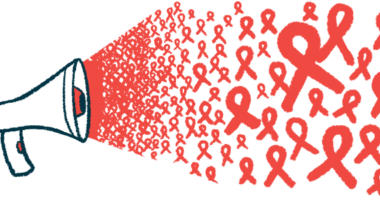I plan a recess break for every hour of my ALS day
Movement doesn't have to be formal exercise, but it sure does help

“Keep on moving!” That’s something I tell myself every day. Since I live with ALS, however, keeping myself moving is easier said than done — especially in the afternoon, when my energy drops and I slump deeper into my chair. Oh, my, it’d be so easy to just stay seated, stare at the computer screen, and unproductively watch random videos on YouTube.
But I’ve adopted a new perspective about moving, one that helps refresh my mind and body. You can try it, too. Here’s how.
First, let’s all agree that we need to build movement into our day. All of us. Our bodies need to move, and for most folks just taking care of normal daily activities meets their body’s need for movement. But for those of us with ALS or related conditions, “normal daily activity” just isn’t possible anymore.
Gone are the days of tossing a load of laundry in the washing machine while on the way out the door to water plants in the garden, followed by toting a bag of garbage out to the curb. Most likely, we’re watching someone else do all the moving. And that’s not good.
It’s all in how you say it
Notice I didn’t use the word “exercise”; I said “moving.” That’s an important distinction that my 30-some years in the wellness and fitness profession taught me. Almost everyone disliked having to exercise, we knew, but if we presented it as moving, at least people would give it a try.
I know it’s all semantics. But something as simple as a change in perspective can go a long way toward achieving success.
So what’s this new spark to get moving?
Recess? Tell me more
Have you ever watched young children on the playground during recess? They’re not standing around doing arm curls or down on the ground counting pushups and situps. They’re busy swinging their arms, twisting their bodies, twirling and kicking in the air — just doing simple, playful movements.
I recalled my grade school days and how when the recess bell rang, we’d jump up out of our desks and run outside to play. I wanted to capture that feeling again.
But my ALS has made jumping up and running impossible. Even going outside isn’t a spontaneous decision I can make. However, I’ve found a way to take my version of a break for recess.
When to have a recess
I still do my morning stretches while lying in bed, and I’m on the floor in the evening rolling, rocking, leg lifting, and crawling on my hands and knees. Those are my legitimate exercise sessions. During the day I’m a clock watcher, and just as in school, I try to take a break every hour. My recess lasts only five to six minutes, but it helps me begin the next hour with more energy and a clearer mind.
What do I do? Here are a few examples: I look out the window, raise my arms, dance in my chair, kick my legs, and twist in my chair to look way behind me. Try these or invent your own. If you can’t move by yourself, ask your caregiver to join you and help with guided range-of-motion movements. You can find more ideas in my column “My Tricks for Adding Movement to My Day.”
Let’s keep moving. Because when we do, we’re learning to live well while living with ALS.
Note: ALS News Today is strictly a news and information website about the disease. It does not provide medical advice, diagnosis, or treatment. This content is not intended to be a substitute for professional medical advice, diagnosis, or treatment. Always seek the advice of your physician or other qualified health provider with any questions you may have regarding a medical condition. Never disregard professional medical advice or delay in seeking it because of something you have read on this website. The opinions expressed in this column are not those of ALS News Today or its parent company, Bionews, and are intended to spark discussion about issues pertaining to ALS.








Leave a comment
Fill in the required fields to post. Your email address will not be published.